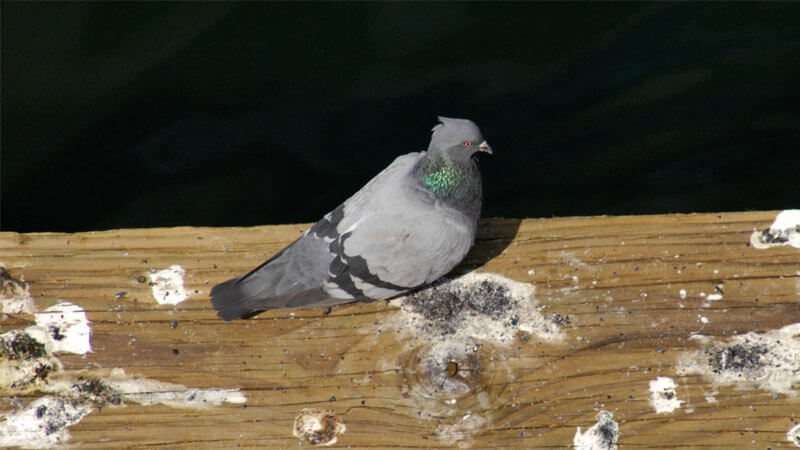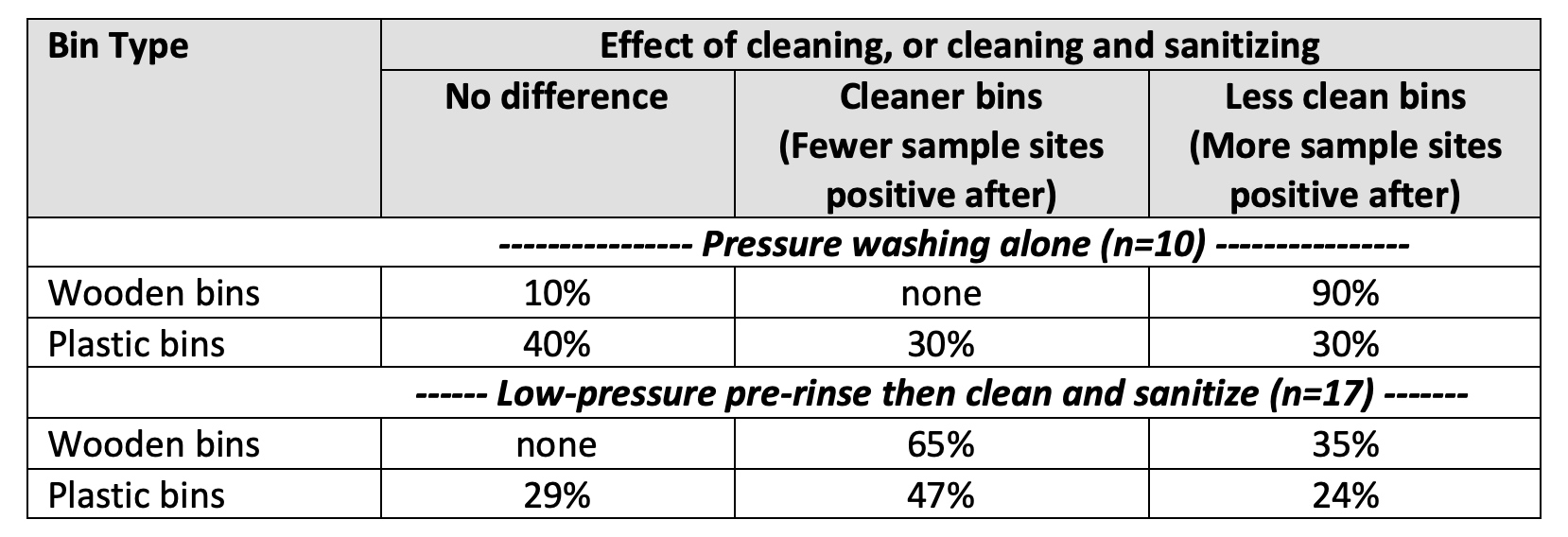Oh Crap! How to Manage Your Risk in Crappy Situations
Blue Water Conservation District Produce Safety Technician

What Happened?
You are preparing for a morning of harvesting peppers. You head to the shed where you store your harvest containers, and …Oh Crap! Pigeons had been roosting in the rafters and your harvest containers are covered in poop. You don’t want to make any one sick… What do you do?
Do You….
What does the Food Safety Modernization Act: Produce Safety Rule Say?
“You must inspect, maintain, and clean and, when necessary and appropriate, sanitize all food contact surfaces of equipment and tools, used in covered activities as frequently as reasonably necessary to protect against contamination of covered produce.” §112.123 (d)(1) The Rule never defines “as frequently as reasonably necessary.” This gives you as a grower a lot of room for interpretation.
What is the Risk from Bird Poop?
Birds can carry several bacteriological pathogens including Listeria monocytogenes, Salmonella, and pathogenic E. coli all of which can be spread through feces. Birds such as pigeons tend to pick up these pathogens from feeding on feces of domestic animals such as cattle, or from feeding on rubbish found in landfills. Caution should be exercised anytime food contact surfaces are exposed to bird fecal contamination.
What is the Most Effective way to Remove Contamination?
A study, performed by Karen Killinger Ph.D. who was at Washington State University at the time, examined a variety of ways tree fruit growers clean and sanitize their harvest containers in order to determine the most effective way of ridding harvest containers of contamination. The study included both wood and plastic bins and looked at the effectiveness of pressure washing alone, and a low-pressure water pre-rinse followed by cleaning and sanitizing. The bins were sampled and tested for presence of total coliforms in six representative sites both before and after each cleaning and sanitizing event to determine the effectiveness of each of the cleaning processes. Total coliforms are an indicator of contamination. The contamination can be soil or other contaminants including feces. Some relevant results of the study are shown in the chart below:

Whereas pressure washing alone does not appear to be effective at reducing the extent of contamination on harvest containers, a low-pressure pre-rinse followed by cleaning and sanitizing of containers proved effective in reducing the total area of the bins that tested positive for total coliforms.
The data tells us that it is not effective to simply pressure wash harvest bins. This may be because pressure washing spreads the contamination around. The data collected from the study also tells us that there are differences in how effective cleaning and sanitizing is when using harvest bins made with different materials. We can see that wooden bins are more susceptible to the spread of contamination, however wooden bins may also show a better response to cleaning and sanitizing.
There are many EPA labeled Sanitizers that are labeled for use on non-porous food contact surfaces like the plastic bins used in this study. However, few sanitizers are labeled for use on porous surfaces
such as wood . For example, a popular PAA sanitizer, SaniDate 5.0, states on its label “This product is not to be used for sanitization of surfaces made of wood.” It is important to use EPA labeled sanitizers and use the sanitizer as its labeled directs. Because of the requirement to use a sanitizer that is labeled for its intended use, it many be very difficult to locate a sanitizer to use on wooden harvest bins, such as the ones in this scenario that you would like to sanitize because of exposure to bird poop. Unless a sanitizer that is labeled for use on wooden food contact surfaces can be located, you can’t simply sanitize the problem away. Another reason to caution about use of wood, if contamination from feces is found or suspected, is that wood’s porosity can allow for bacteria to get into the wood where it survives and is then released later when the wood becomes damp possibly contaminating produce. Here are other options that can reduce risk in a situation where wooden bins have become contaminated:
Managing Risk:
The goal of this article was to provide you with insights, options, and information about corrective actions that reduce risk. There may be no way to completely bring the risk of using the harvest bins that have been exposed to contamination to zero. However, we know that pressure washing alone might make the problem worse, by spreading it around. We also know that a low-pressure pre-rinse followed by cleaning and sanitizing can reduce the problem areas. This article summarizes these and other corrective actions that can be implemented to reduce risk from contaminated harvest bins.
[1] Clark, Larry, "Disease Risks ·Posed by Wild Birds Associated with Agricultural Landscapes" (2014). USDA National Wildlife Research Center - Staff Publications. 1619. https://digitalcommons.unl.edu/icwdm_usdanwrc/1619
[2] Killinger, Karen. “Assessment of Sanitation Techniques for Tree Fruit Storage Bins.” Center for Produce Safety, www.centerforproducesafety.org/researchproject/345/awards/Assessment_of_sanitation_techniques_for_tree_fruit_storage_bins.html.
[3] “Interpreting an EPA Label: Sanitizer vs Disinfectant.” Sterilex®, 2 Aug. 2018, www.sterilex.com/interpreting-an-epa-label-sanitizer-vs-disinfectant/.
[4] SaniDate 5.0 Label, https://2cpx6j45416t43itfm2y6enr-wpengine.netdna-ssl.com/wp-content/uploads/2019/12/sanidate-5_label.pdf
[5] Bjørn C. Tisjø Schirmer and Elin Røssvoll. “The Use of Wood in Contact with Food.” Nofima, 16 Sept. 2010, nofima.no/en/nyhet/2010/09/the-use-of-wood-in-contact-with-food/.



 Print
Print Email
Email